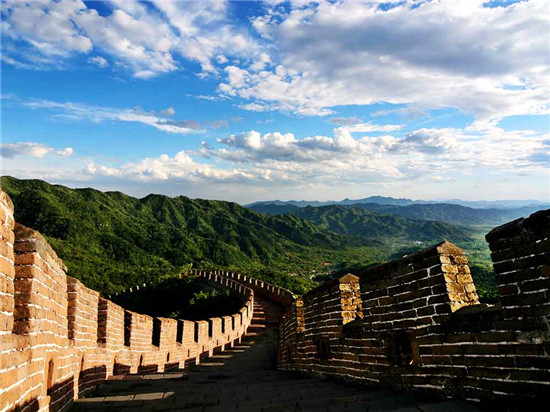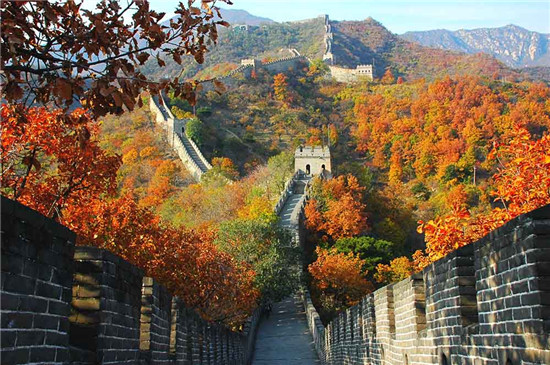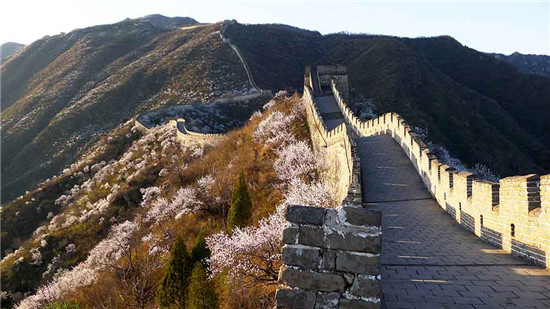Mutianyu Great Wall


The Mutianyu Great Wall, 70 kilometers from Beijing, has a long history and splendid culture. With its own unique architectural style, it expresses the essence of the Great Wall of the Ming dynasty.
In spring, flowers bloom; in summer, nearby mountains fed with spring water are covered with green; in autumn, red leaves cover the mountain range, and its trees bear fruit; in winter, snow falls onto a pure white world. Thus has Mutianyu become known as the best part of the Great Wall.
I. Geographical Location

The Mutianyu Great Wall is located in Mutianyu Village in Huairou district, with Gubeikou to the east and Huanghuacheng and Badaling to the west. It’s also not far from Juyong Pass, Zijing Pass, and Daoma Pass. As the poem goes, "west of Bohai fairyland, east of purple and green Juyong”, so the steep and towering terrain makes it possible to preserve the Wall at Mutianyu as it was in the Ming Dynasty. In those days it was also a great military barrier and a protection for the capital and Imperial Tombs; thus it has been a hotly contested spot since ancient times.
II. Natural Environment

The Mutianyu Great Wall has four distinct seasons, and tourism activities are carried out all year round. With its range of surrounding mountains, the vegetation coverage rate is more than 96 percent, and the annual average temperature is 11.9 degrees Celsius. The warm and humid climate helps keep abundant vegetation coverage, so the Great Wall remains nestled in the green mountains and rivers as in ancient times. The atmosphere and the beauty of nature is well blended into one harmonious whole, giving rise to Mutianyu’s reputation as having the most unique beauty anywhere along the ten thousand li Great Wall. There are over a thousand trees close by that are more than a hundred years old. From the beginning of March apricot trees, peach trees, rhododendrons and other plants start to bloom one after another on the mountains; into the summer, the mountains turn green, with spring water running below the trees; autumn is the time for green pine trees and cypress trees, red maples, oak, and chestnuts, as well as yellow apricot, and golden pear, persimmon and purple pear and plum trees. All different colors of leaves intertwine with the white branches in an autumnal mood. In winter, snow-clad mountains gleam with a northern light.
MOST POPULAR
- 1 China Daily's 'Shopping in China' platform appeals to intl audiences
- 2 China updates Catalogue of Encouraged Industries for Foreign Investment
- 3 Policies concerning expats, foreign enterprises in December 2025
- 4 China becomes the world's fourth manufacturing power
- 5 China ascends global higher education ranking







